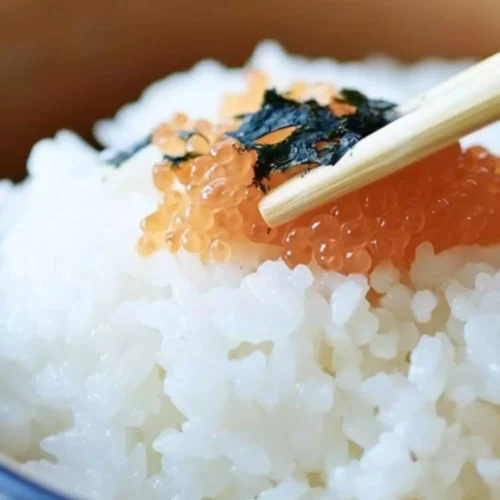
Nobu Sushi Rice Recipe
When it comes to sushi rice, it’s easy to get excited about what you can eat along with it.
Equipment
- Large bowl
- Rice cooker
Ingredients
- 1 cup of unseasoned rice wine vinegar
- 1/2 cup of white sugar
- 1/4 cup of sea salt
- A 2-inch strip of dried kombu seaweed
- 1 tablespoon of mirin
- For the rice:
- 3 cups of short-grain Japonica rice
Instructions
- Begin with rinsing your rice. Place the Japonica rice in a large bowl and cover it with cold water. Swirl it gently and drain the water. Repeat this process at least four or five times until the water runs mostly clear.
- This step is crucial as it removes excess starch, which can make the rice gummy. I learned this little trick after some early, sticky disasters in the kitchen!
- Once your rice is rinsed, it's time to soak it. In a rice cooker or pot, add the rinsed rice along with 3 3/4 cups of water. If you’ve never used a rice cooker, trust me, it’s a game-changer. Let the rice soak for about 30 minutes.
- This soaking time is essential. It allows the grains to absorb moisture evenly, resulting in a perfect fluffy texture similar to what you’d expect from a top-notch sushi restaurant like Nobu.
- Cook the rice according to your rice cooker settings or on the stovetop. If using a pot, cover it, bring it to a boil, then reduce to a simmer for about 18-20 minutes until all the water is absorbed.
- It’s tempting to peek, but resist! Keep the lid on to trap steam, which ensures all grains cook uniformly.
- While the rice cooks, let’s whip up the sushi vinegar. In a small saucepan, combine the rice wine vinegar, sugar, salt, mirin, and the strip of kombu. Heat it over low heat until the sugar dissolves completely. This will take just a few minutes.
- Don’t boil it! We want a harmonious blend here. Once ready, remove from heat and let it cool slightly before discarding the kombu.
- When the rice is finished cooking, transfer it into a large wooden or glass bowl. This prevents the rice from continuing to cook after you remove it from heat. While it’s still warm, gently fold in the sushi vinegar with a wooden spatula.
- You want to do this gently—think of folding in a cloud rather than stirring it like a stew. This step infuses the rice with flavor and creates that perfect balance of sweet and tangy.
- To cool the rice, use a flat, wide fan or a piece of cardboard. This is optional but adds a nice touch! Fan the rice gently while you continue to fold it. We aim for a slightly sticky but separated texture in each grain. This traditional method not only cools but also adds a shine to the rice.
Notes
- Unseasoned Rice Wine Vinegar: This vinegar is essential. Its clean taste provides the right acidity without overwhelming the rice.
- White Sugar: Adds just the right hint of sweetness to balance the salty notes from the sea salt.
- Sea Salt: Essential for seasoning. It enhances flavor but should be added carefully to prevent overpowering the dish.
- Dried Kombu: It may seem optional, but this seaweed adds an umami depth to the flavor profile. A secret ingredient if you will!
- Mirin: This sweet rice wine adds depth and a touch of sweetness that defines sushi rice, linking together all flavors beautifully.
Nutrition
Calories: 398kcalCarbohydrates: 88gProtein: 7gFat: 0.5gSodium: 4719mgFiber: 3gSugar: 8g
Tried this recipe?Let us know how it was!